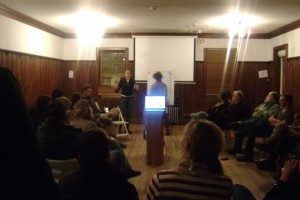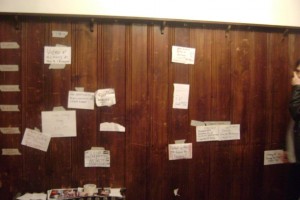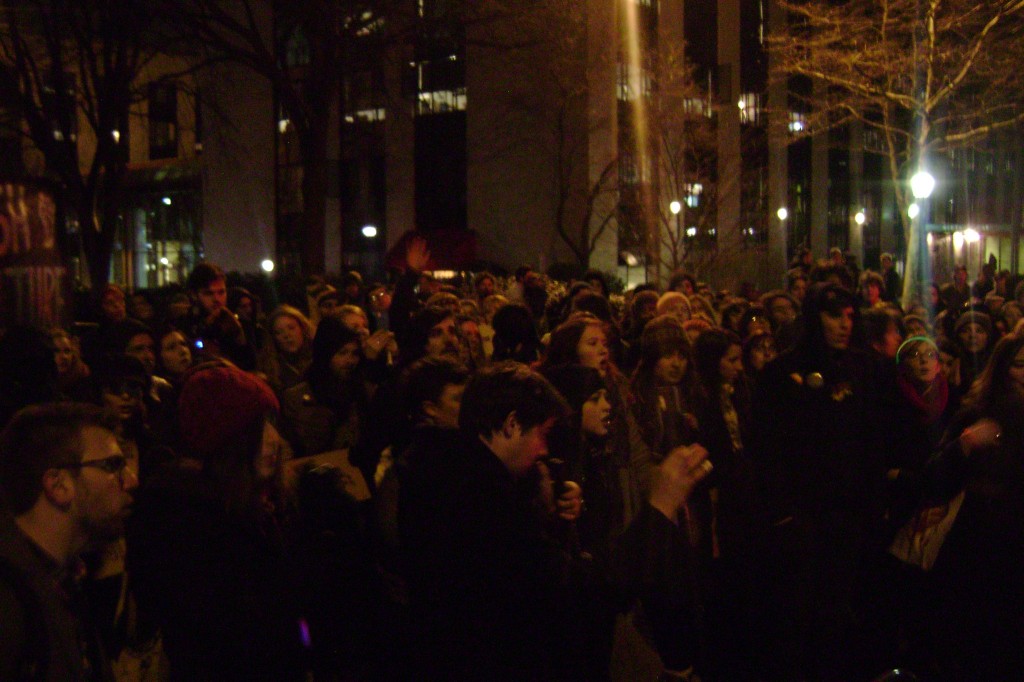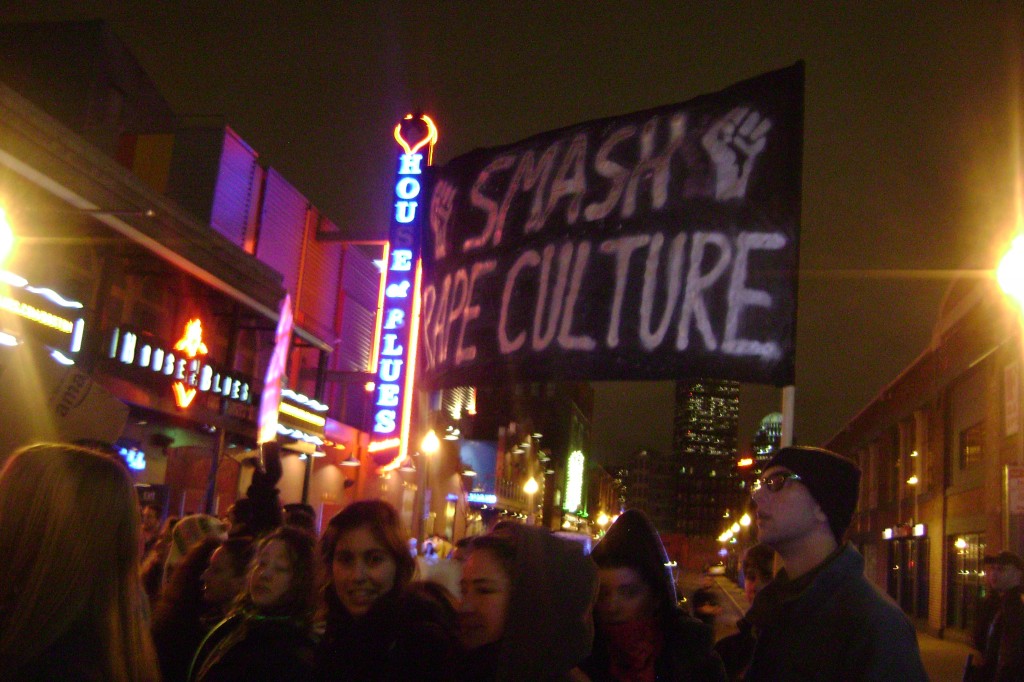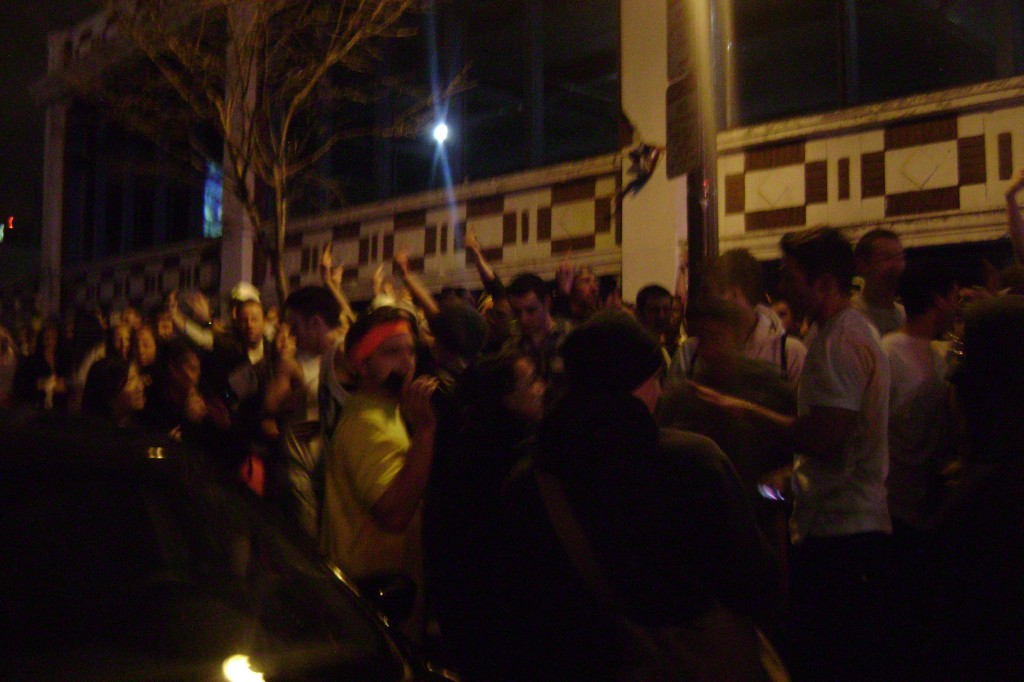Tents gone, students turn to Occupy 2.0
Since students have returned from winter break, Occupy Harvard has held two meetings each week to plan the movement’s next phase: Occupy 2.0, Korn explained. “The idea behind Occupy 2.0 is transitioning from our physical encampment to more cohesive, disruptive, interesting, fun, targeted actions,” she said.
Among these actions, Occupy Harvard has begun working on the No Layoffs Campaign with SLAM (Student Labor Action Movement). The No Layoffs Campaign gained considerable attention in 2008 when students participated in a wave of demonstrations as the university laid off several staff workers. This year the campaign aims to protest on behalf of the library staff, many of whom will be laid off due to a restructuring of the library system, according to university administration.
Occupy Harvard has also joined with the Occupy UMass Boston movement only established more than a week ago. Occupy Harvard has lent tents, solidarity signs and other resources to the students at UMass in an effort to show “we are all students fighting the same fight,” Korn said.
http://tinyurl.com/6un3hys
Tipped workers – 72.9 percent of whom are women – hope for hike in sub-minimum wage this year
“Thanks to the Occupy movement, more voters are aware of inequality and the terrible toll it takes on low-wage workers and their families,” says Amy Hanauer, executive director of Policy Matters Ohio. “Support is growing for increasing the minimum wage of tipped workers who work hard, but have fallen farther and farther behind because their wages don’t cover their basic needs.”
The pay of tipped workers has languished because an obscure federal provision, called the tip credit, has established a sub-minimum wage for tipped workers: $2.15 per hour or $4,333 a year for a full-time worker. The federal full minimum wage is $7.25 per hour, or about $15,000 a year for a 40-hour workweek.
Raising the minimum wage may alleviate what researcher Sylvia A. Allegretto calls an under-appreciated factor in the poverty of women.
“The sub-minimum wage hits women hard because 72.9 percent of tipped workers are women compared to less than half the overall labor force,” says Allegretto, co-chair of the Center on Wage and Employment Dynamics at the Institute for Research on Labor and Employment of the University of California, Berkeley.
http://tinyurl.com/6lv6z3n
The United States: First Country To Report More Male Rape Victims Than Female
In January, prodded in part by outrage over a series of articles in the New York Review of Books, the Justice Department finally released an estimate of the prevalence of sexual abuse in penitentiaries. The reliance on filed complaints appeared to understate the problem. For 2008, for example, the government had previously tallied 935 confirmed instances of sexual abuse. After asking around, and performing some calculations, the Justice Department came up with a new number: 216,000. That’s 216,000 victims, not instances. These victims are often assaulted multiple times over the course of the year.
The Justice Department now seems to be saying that prison rape accounted for the majority of all rapes committed in the US in 2008, likely making the United States the first country in the history of the world to count more rapes for men than for women.
As sites of governmental authority, prisons destabilize Weber’s definition of the state as the monopolist of violence. In prisons, the monopoly is suspended: anybody is free to commit rape and be reasonably assured that no state official will notice or care (barring those instances when the management knowingly encourages rape, unleashing favored inmates on troublemakers as a strategy for administrative control). The prison staff is above the law; the prison inmates, below it.
Far from embodying the model of Bentham/Foucault’s panopticon- that is, one of total surveillance-America’s prisons are its blind spots, places where complaints cannot be heard and abuses cannot be seen. Though important symbols of bureaucratic authority, they are spaces that lie beyond our system of bureaucratic oversight. As far as the outside world is concerned, every American prison functions as a black site.
http://tinyurl.com/7rnw3hv
Continue reading “The OB Media Rundown for 2/6/12” »




